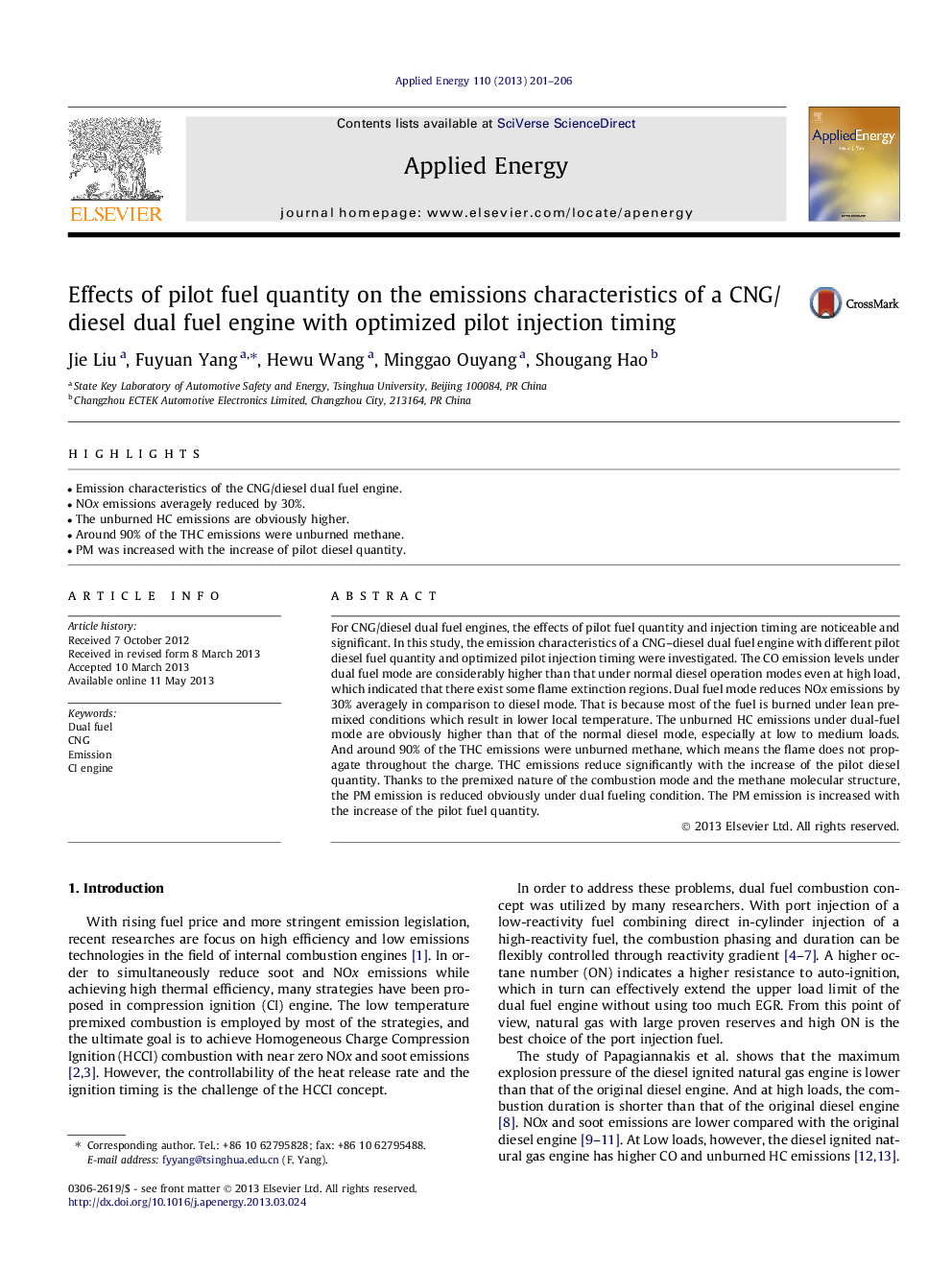| Article ID | Journal | Published Year | Pages | File Type |
|---|---|---|---|---|
| 243061 | Applied Energy | 2013 | 6 Pages |
•Emission characteristics of the CNG/diesel dual fuel engine.•NOx emissions averagely reduced by 30%.•The unburned HC emissions are obviously higher.•Around 90% of the THC emissions were unburned methane.•PM was increased with the increase of pilot diesel quantity.
For CNG/diesel dual fuel engines, the effects of pilot fuel quantity and injection timing are noticeable and significant. In this study, the emission characteristics of a CNG–diesel dual fuel engine with different pilot diesel fuel quantity and optimized pilot injection timing were investigated. The CO emission levels under dual fuel mode are considerably higher than that under normal diesel operation modes even at high load, which indicated that there exist some flame extinction regions. Dual fuel mode reduces NOx emissions by 30% averagely in comparison to diesel mode. That is because most of the fuel is burned under lean premixed conditions which result in lower local temperature. The unburned HC emissions under dual-fuel mode are obviously higher than that of the normal diesel mode, especially at low to medium loads. And around 90% of the THC emissions were unburned methane, which means the flame does not propagate throughout the charge. THC emissions reduce significantly with the increase of the pilot diesel quantity. Thanks to the premixed nature of the combustion mode and the methane molecular structure, the PM emission is reduced obviously under dual fueling condition. The PM emission is increased with the increase of the pilot fuel quantity.
